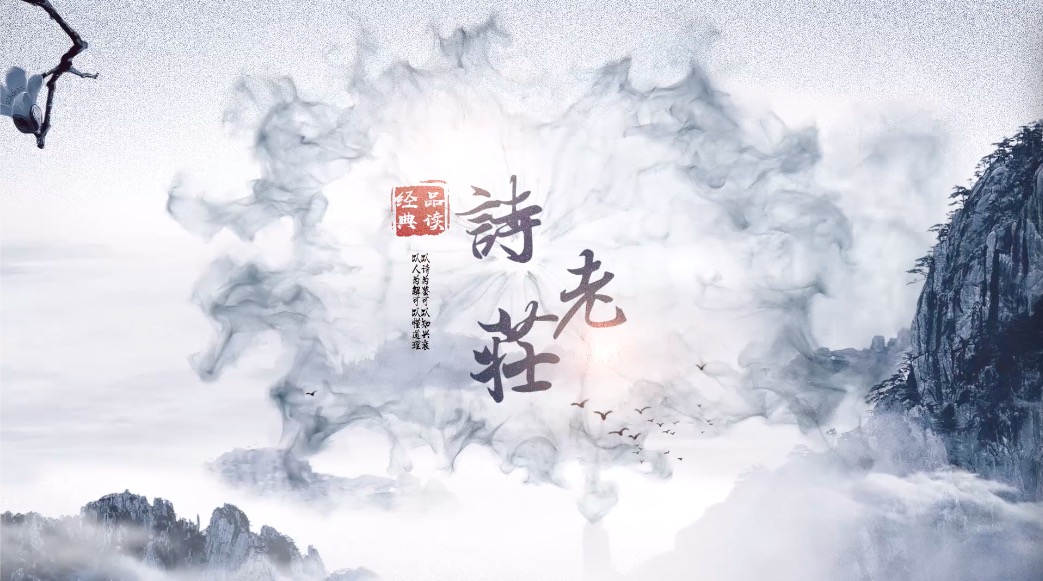
当前课程知识点:云南旅游文化之行 > 第六章 在美食中品尝云南旅游文化 Local Delicacies in Yunnan > 6.2 特色茶点云南味 Local tea and dessert in Yunnan > 6.2 特色茶点云南味
Hello, everyone.
Nice to see you again.
Welcome back.
Last time,
we focused on two representative delicacies in Yunnan.
Today, we are going to focus on
a representative local drink and dessert.
They are believed to be the necessities for the tea time of local people in Yunnan.
What are they?
Let’s watch a short video.
From the video, you must have known the answer.
We will explain Pu’er tea and flower cakes in Yunnan.
Let’s begin with Pu’er tea.
I hope you still remember
the significant Tea-Horse Caravan Road
we have mentioned in the previous chapters.
It was this commercial road
that brought Puer Tea from southern Yunnan to Tibet.
Tea is native to Yunnan.
Yunnan is also one of the oldest tea planting areas in China.
Pu’er is the tea production base in Yunnnan.
According to “Annals of Pu’er County,
the planting and production of tea can date back to
as early as East Han Dynasty.
Pu’er Tea is the most famous in Yunnan.
It is well-known for its excellent quality and special aroma.
It was even included in some famous literatures home and abroad.
For instance,
Cao Xueqin wrote a poem called “Pu’ er Tea”
in his famous novel “A Dream of Red Mansions” in Qing dynasty.
The famous Russian novelist
Tolstoy also had descriptions on Pu’er tea
in his novel “War and Peace”.
Why is the tea named by Pu’er?
Actually, Pu’er is the name for a county during Qing dynasty.
Tea in Yunnan mainly produced
in the lower reaches of Langchang River in southern Yunnan,
which all belonged to the Pu’er County at that time.
There was large scale of old tea trees in these regions.
It was not only a tea production region,
but also a tea trade center.
Tea produced here was distributed to other regions by caravans,
such as to Tibet, Burma, Thailand and many other Asian countries
and finally even to some European countires.
Therefore, the local tea was entitled by the name of the county Pu’er.
Today, Pu’er is still remained as the official name for Pu’er City.
Generally speaking,
Pue’r tea can be classified into unfermented tea
and fermented tea based on different ways to process them.
Unfermented tea is also known as green tea
which undergoes the process of rolling and drying in pans.
Green Pu’er tea is often loose tea.
The color of the tea infusion is yellowish,
and the flavor is bitter.
The fermented tea is always pressed into different shapes,
such as brick-shaped tea, pancake-shaped tea and compressed tea.
Loose tea leaves are tightly pressed
for convenience of transportation and fermentation.
In ancient times,
Pu’er tea was transported from southern Yunnan all the way down
to Tibet in northwest.
The long journey of caravans was over four months.
Caravans transported Pu’er tea from tropical regions
to temperate regions and finally to the alpine regions.
Tea experienced high temperature, humid air, low temperature and dry air.
The changes of sunshine and air humidity made the tea gradually fermented.
The color of the tea turns to be black.
After being put into hot water,
black tea leaves makes the tea infusion reddish.
It is exactly the color of grape wine!
The flavor and the aroma are impressive.
Besides, the medicinal value of Pu’er tea has been approved.
It contains rich tea polyphenols
that is conducive to the treatment of the following diseases,
such as, diabetes, high blood pressure, obesity and indigestion.
It is proven to be healthy drink.
People even keep pressed Puer tea as antique
because the compressed Puer tea can be preserved for decades
and the tea doesn’t go decayed.
The aroma can be preserved for a long time too.
Next one is the most popular dessert in Yunnan.
It is flower cake.
Since Yunnan is rich in flowers,
local people have the tradition
to use flowers to make drinks and to cook dishes.
Lots of flowers here are edible,
such as rose, daisy, sweet osmanthus, and jasimine.
Among all food made of flowers,
rose cake is the most famous.
The favorable climate in central Yunnan
provides good conditions for the growth of roses.
Local people plant large scale of edible roses
without applying any chemicals.
Roses will come to full blossom in April every year.
People harvest the roses and separate the petals from the stems.
Rose petals are processed and mixed together with sugar
and finally made into sweet rose cakes.
The special fragrance of rose
and the soft cake together with a cup of Pu’er tea
are the most impressive thing for a pleasant tea time
in a sunny afternoon in Yunnan.
Flower cakes is also the best gift for gourmet friends.
Besides Puer tea and flower cakes,
there are still many other delicacies in Yunnan.
Each of them has the unique way of cooking,
a special story to tell,
a long history to recall
and an amazing flavor to remember.
Hope you can try them some day in the future.
Ok. That’s all for today.
See you next time.
-1.1 彩云之南是何处? Where is Yunnan?
--1.1习题
--1.1 彩云之南是何处 Where is Yunnan?
-1.2 云南的魅力(1)The Attractive Yunnan (1)
--1.2 习题
-1.3 云南的魅力(2)The Attractive Yunnan (2)
--1.3习题
-1.4 云南旅游文化的特点 The Features of Tourism Culture in Yunnan
--1.4 云南旅游文化的特点 The Features of Tourism Culture in Yunnan
--1.4习题
-2.1 神秘的化石带你穿越远古 Precious Fossils in Yunnan
--2.1习题
-2.2 探访真实的侏罗纪公园 The Real Jurassic Park
--2.2 习题
-2.3 云南历史概要(1) Briefing the History of Yunnan (1)
--2.3 习题
-2.4 云南历史概要(2)Briefing the History of Yunnan (2)
--2.4 习题
-2.5 云南历史概要(3) Briefing the History of Yunnan (3)
--2.5 习题
-3.1 读懂怪石嶙峋的喀斯特(1) Gorgeous Karst Wonders :The Stone Forest (1)
--3.1 习题
-3.2 读懂怪石嶙峋的喀斯特 (2)Gorgeous Karst Wonders: The Stone Forest (2)
--3.2 习题
-3.3 读懂怪石嶙峋的喀斯特(3)Gorgeous Karst Wonders: The Stone Forest (3)
--3.3 习题
-3.4 神奇的九乡溶洞(1) The Myth of Karst Caves in Jiuxiang(1)
--3.4 习题
-3.5 神奇的九乡溶洞 (2) The Myth of Karst Caves in Jiuxiang(2)
--3.5 习题
-3.6 圣洁的高原雪山 (1)The Holy Snow Mountains (1)
--3.6 习题
-3.7 圣洁的高原雪山(2)The Holy Snow Mountains (2)
--3.7 习题
-3.8 香格里拉DNA(1) Shangrla DNA(1)
--3.8 习题
-3.9 香格里拉DNA(2) Shangrila DNA (2)
--3.9 习题
-3.10 彩色的沙子能成林 The Amazing Colorful Sand Forest
--3.10 习题
-3.11 神奇的火山 Fabulous Volcanoes
--3.11 习题
-3.12 温润的地热 Geothermal Wonders
--3.12 习题
-3.13 奔腾的江河 Spectacular Rivers
--3.13 习题
-3.14 珍贵的热带雨林 Precious Tropical Rainforests
--3.14 习题
-4.1 丽江古城 Lijiang Ancient Town
--4.1 丽江古城
--4.1 习题
-4.2 大理古城 Dali Ancient Town
--4.2 大理古城
--4.2 习题
-4.3 和顺古镇 Heshun Ancient Town
--4.3 和顺古镇
--4.3 习题
-5.1 云南民族概况 Briefing Ethnic Groups in Yunnan
--5.1 习题
-5.2 彝族 Yi People
--5.2 彝族
--5.2 习题
-5.3 白族 Bai People
--5.3 白族
--5.3 习题
-5.4 哈尼族 Hani People
--5.4 习题
-5.5 傣族 Dai People
--5.5 傣族
--5.5 习题
-5.6 纳西族 Naxi People
--5.6 纳西族
--5.6 习题
-5.7 景颇族 Jingpo People
--5.7 景颇族
--5.7 习题
-5.8 特色节庆 Festivals of Ethnic Peoples
--5.8 习题
-6.1 特色佳肴云南味 Local Food in Yunnan
--6.1 习题
-6.2 特色茶点云南味 Local tea and dessert in Yunnan
--6.2 习题
-7.1 旅游文化中的云南名人故事(1)Stories of Famous People in Yunnan (1)
--7.1 云南名人故事(1)Stories of Famous People in Yunnan
--7.1 习题
-7.2 旅游文化中的云南名人故事(2)Stories of Famous People in Yunnan (2)
--7.2 习题
-7.3 旅游文化中的云南名人故事(3)Stories of Famous People in Yunnan(3)
--7.3 云南名人故事(3)Stories of Famous People in Yunnan
--7.3 习题
-8.1 云南欣欣向荣的国际会展 The Prosperous International Exhibitions in Yunnan
--8.1 习题
-8.2 一代一路与云南旅游 The Tourism of Yunnan under “One Belt and One Road Initiative”
--8.2 习题






